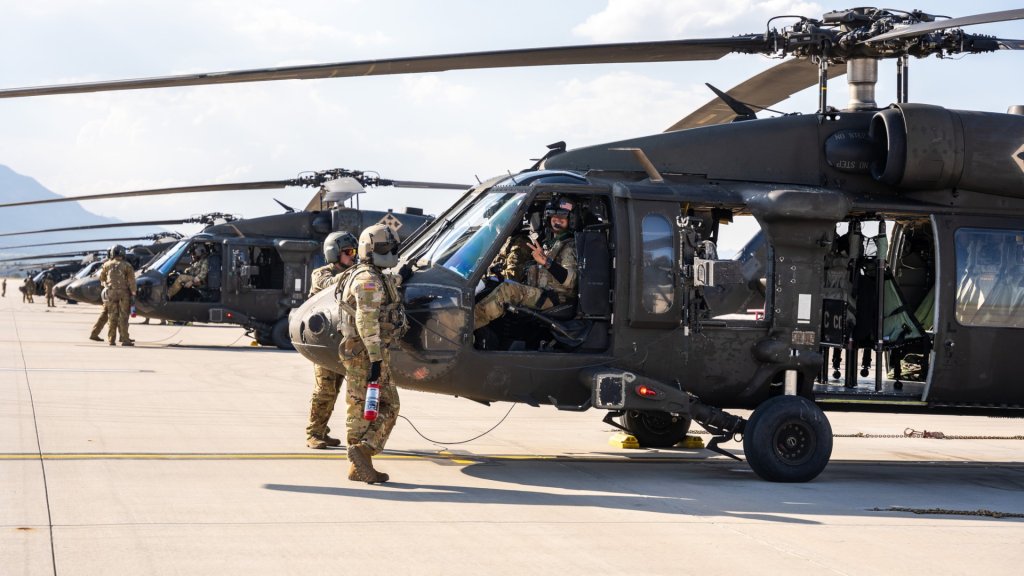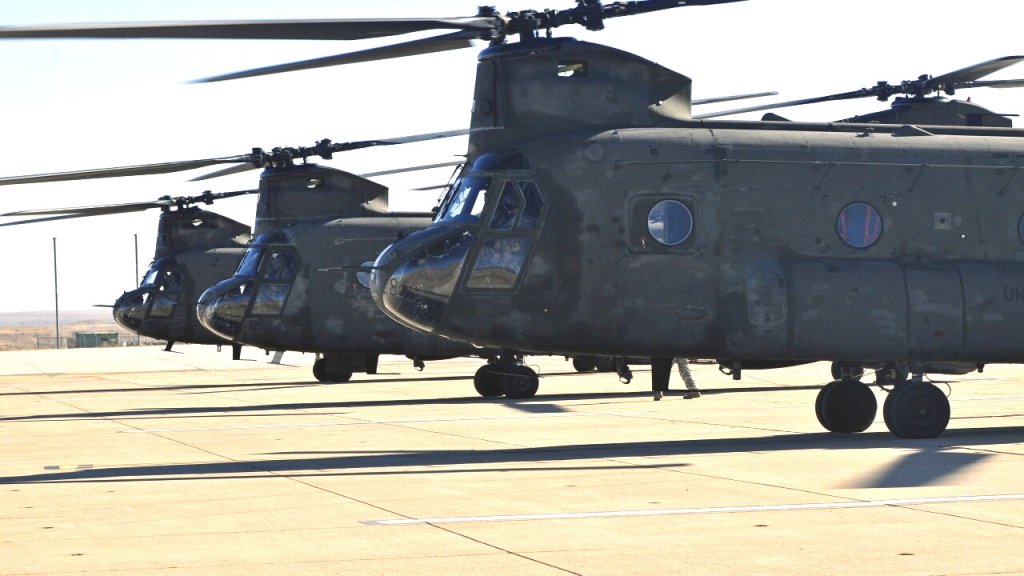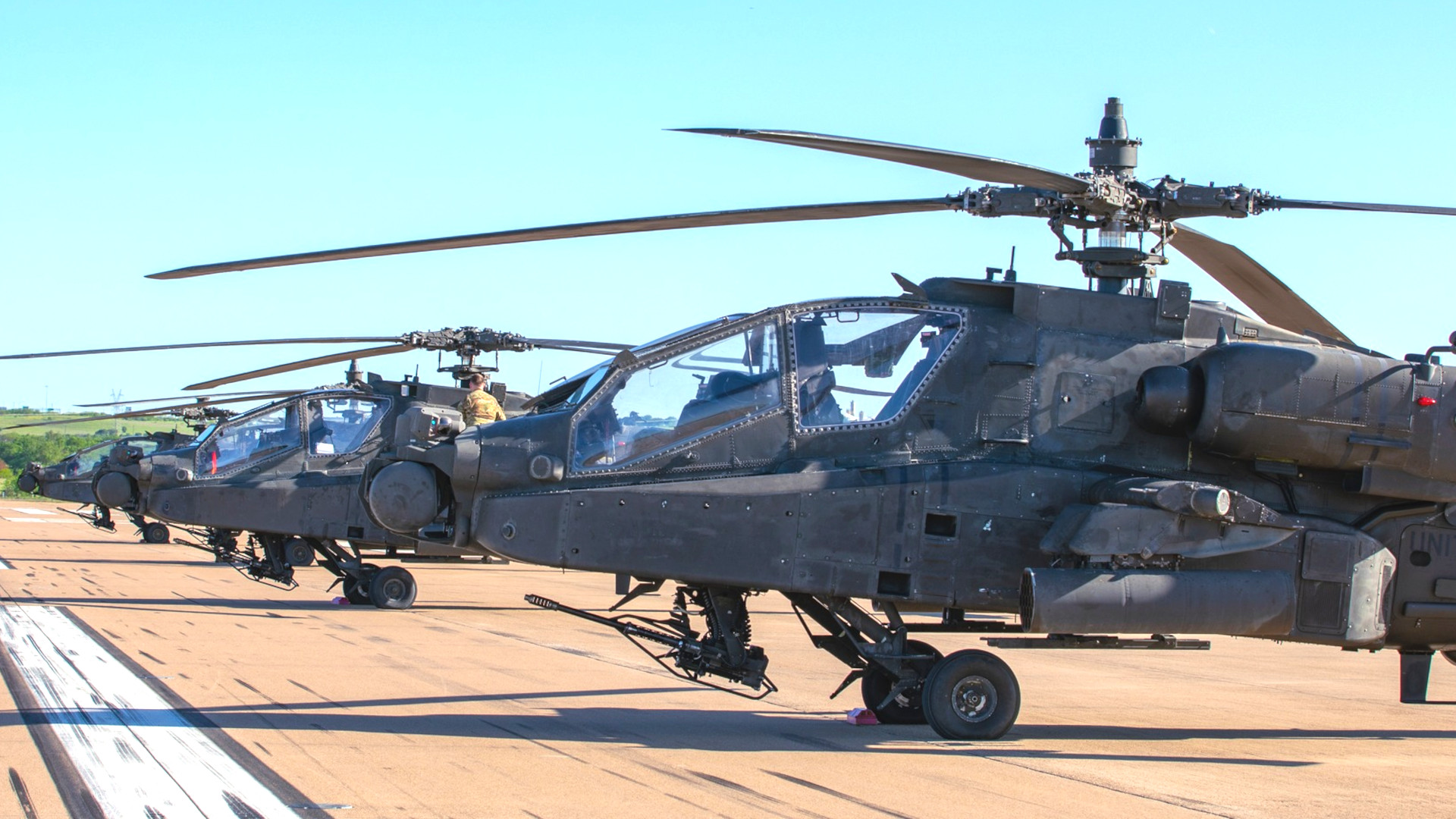A total of 44 U.S. Army helicopters suffered various degrees of damage during a burst of extreme weather at Fort Carson in Colorado earlier this year. This includes AH-64 Apache attack helicopters, Black Hawk utility and medical evacuation types, and Chinook heavy lifters. The service has sought at least $29.3 million to help repair the aircraft, which represent a significant portion of the fleet assigned to the 4th Infantry Division’s 4th Combat Aviation Brigade.
The details about the scale and scope of the damage to helicopters at Fort Carson’s Butts Army Heliport come from a Pentagon document detailing various so-called budgetary reprogramming actions approved in Fiscal Year 2024, which ended on September 30. By law, the U.S. military has to get approval from Congress to reallocate funding from one part of its budget to another.
Butts Army Heliport was hit by what the Pentagon reprogramming action described as a “severe microburst weather event” on August 1. The National Weather Service defines a microburst as “a localized column of sinking air (downdraft) within a thunderstorm and is usually less than or equal to 2.5 miles in diameter.”
“Funds are required for Army helicopter repairs that were damaged… at Fort Carson, CO,” the Pentagon reprogramming document, which is dated September 11, says. “The damaged helicopters are as follows: six AH-64D; seven AH-64E; seven CH-47F; nine UH-60M; ten HH-60M; and five UH-60L.”

The approved reprogramming put an additional $29.333 million into the Army’s Operation and Maintenance account for repairs. Whether this reflects the total assessed damage to all 44 helicopters or if any additional funding to help repair them has come from other sources is unknown. Whether any of those helicopters have already been repaired and returned to service is also not known.
The War Zone has reached out to Fort Carson for more information.

“A variety of aircraft are damaged to include Apaches, Chinooks, and Black Hawks,” authorities at Fort Carson had said in a statement back on August 2. “Facilities on the heliport have minor damage. Currently, there are no environmental impacts reported. There will be a thorough investigation to assess the damage.”
“This weather event had a significant impact to our fleet. I am grateful there were no injuries,” Army Col. Nicholas Ploetz, commander of the 4th Combat Aviation Brigade, also said in a statement at the time. “Our Soldiers are resilient and will do what is necessary to recover our equipment and continue to perform our mission.”
How many helicopters of all types the 4th Combat Aviation Brigade had assigned to it on August 1 is unclear. At least as of 2010, a typical Army Combat Aviation Brigade had around 48 AH-64s, 38 UH-60s, 12 HH-60s, and 12 CH-47s, according to one official document.
The extreme weather at Fort Carson came at the tail end of a fiscal year, which began on October 1, 2023, that had also seen a notable uptick in other kinds of Army aviation accidents. This includes the crash of a 4th Combat Aviation Brigade AH-64 back in March, which caused a temporary grounding of all aircraft at the Colorado base. That was one of four Apache mishaps in the space of two months.

In April, Army officials ordered a service-wide aviation safety “standup” in the wake of 12 total crashes and 10 fatalities in the preceding six months. The service had suffered just nine Class A aviation mishaps in all of Fiscal Year 2023, according to Task & Purpose.
At the time of writing, the U.S. military currently defines a Class A mishap as one in which the total assessed damage is $2.5 million or more; a crewed aircraft is deemed completely “destroyed, missing, or abandoned”; at least one fatality or total permanent disability occurs; or some combination thereof.
“Of the numerous accidents we had this year, there was, there was not a single finding like ‘this is the problem we have in aviation.’ It’s multifaceted,” Brig. Gen. Matthew Braman, Director of Army Aviation within the service’s headquarters at the Pentagon, said earlier this month. “[The] majority of those findings are things that reside down at the unit level, where unit commanders can enforce policy existing policies that work.”
Braman comments came during a panel discussion at the Association of the Army’s main annual conference (AUSA) in Washington, D.C.
“There’s also Army-level fixes that we’re looking at. So, some of those are material fixes… certainly on the Apache side they’re looking at ways to make improvements on certain aspects,” Braman added. A potentially serious issue with electrical power generators on Army AH-64s notably emerged last year, which service officials have said since they have been looking for long-term solutions to resolve.
Braman also highlighted unspecified training and other materiel factors.

“It’s an ongoing process,” the Army’s top aviation office said. “Some of them are very fast to fix, and some of them will take lengthy time as we look at ways to do things better, but a lot of interest at senior levels for the appropriate reason, and we’re fully engaged in …assuring… that we get all those buckets of things.”
There are no indications one way or the other currently that what happened at Fort Carson in August was the result of any negligence. We do now have a much fuller picture of just how significant the damage at Butts Army Heliport that left dozens of helicopters impacted.
Contact the author: joe@twz.com
